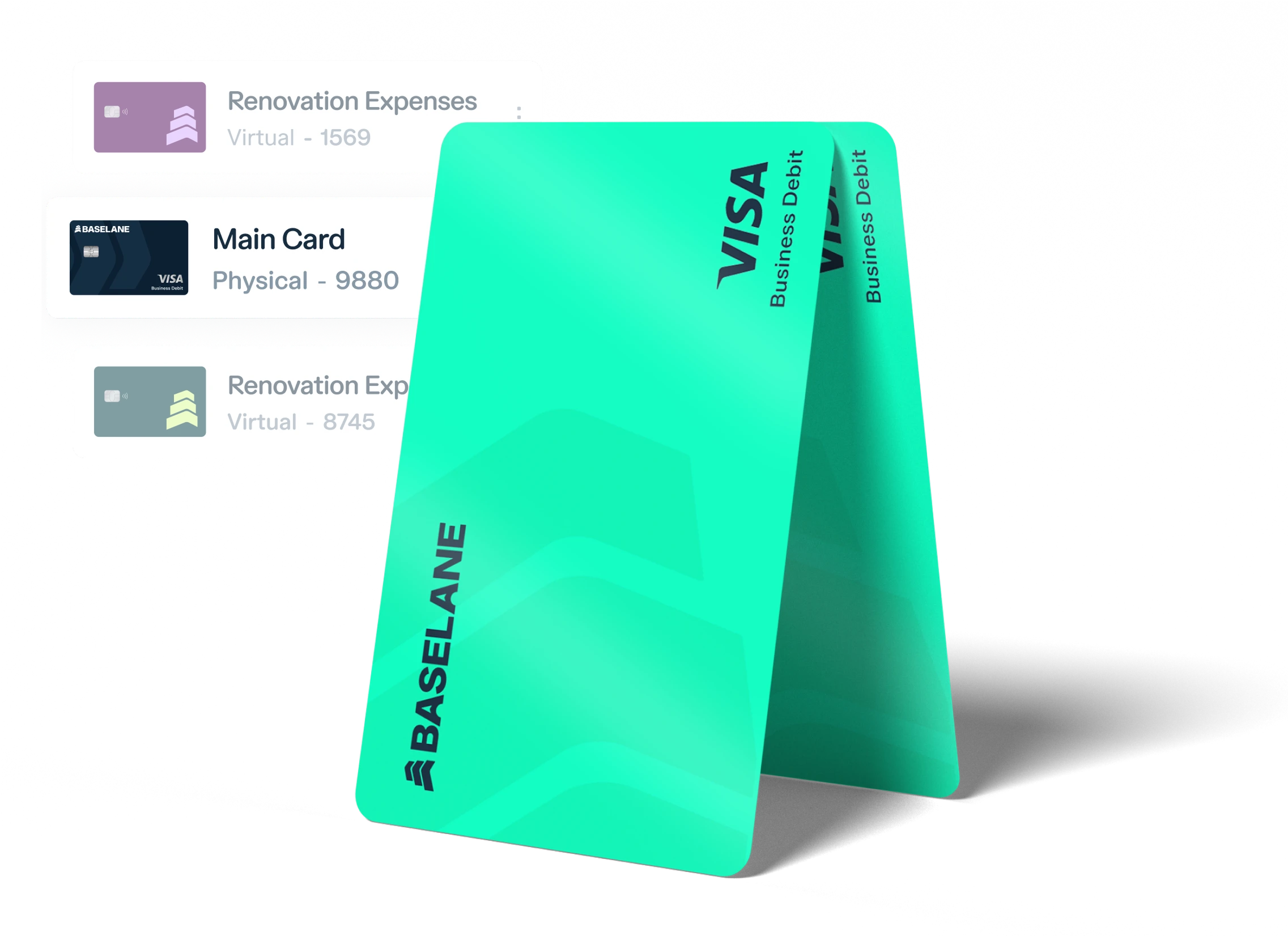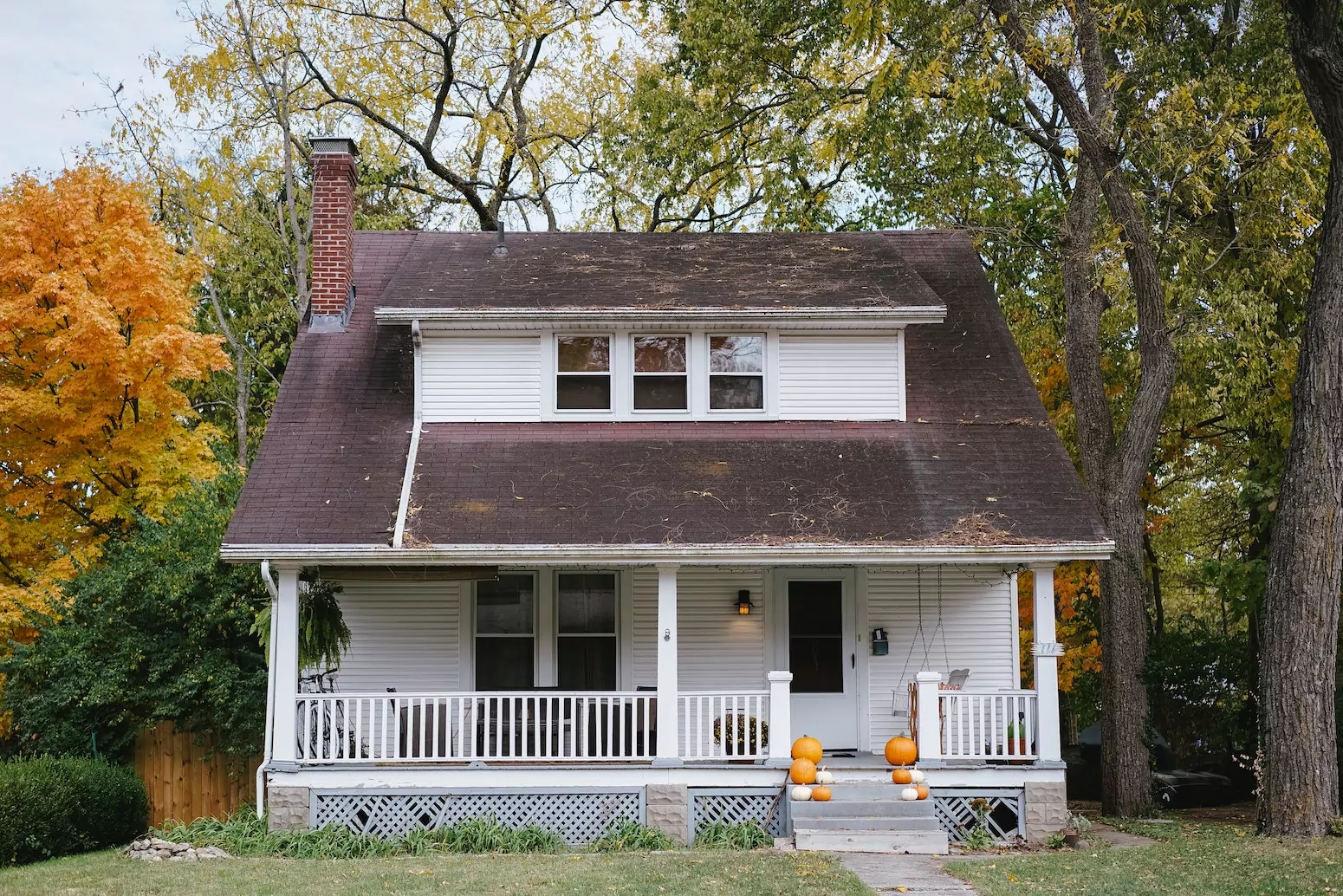To get a rental property loan in 2025, lenders require a minimum 680 credit score and a 15-25% down payment, with rates 0.5% to 0.75% higher than primary home mortgages. Before approval, lenders also evaluate income stability, cash reserves, and rental income potential.
Let’s break down the loan types, qualification criteria, and step-by-step process to help you secure the best rental property financing for your investment.
Key takeaways
-
- Higher borrowing standards: Rental property loans require a 15-25% down payment, 680+ credit score, and six months of cash reserves to qualify.
- Loan structure & costs: Interest rates are typically 0.5% to 0.75% higher than primary home mortgages, but private mortgage insurance (PMI) is not required.
- Property & income requirements: Properties must be turn-key and tenant-ready, and lenders may count rental income from other properties toward loan qualification.
- Financing options: Investors can choose from Conventional, FHA, VA, Private Money, Portfolio, Blanket, HELOC, Seller Financing, and DSCR loans, each with different eligibility criteria.
- Application process: Borrowers must provide a loan application, credit report, proof of income, bank statements, rental history, insurance, and down payment verification.
What is a rental property loan?
A rental property loan is a first lien mortgage designed for investment properties, meaning the property is not owner-occupied. These loans for rental properties allow real estate investors to finance single-family homes, multi-unit buildings, and vacation rentals.
Key aspects include:
-
- Eligibility: The property must be a turn-key rental, ready for tenants. This is important whether you’re getting a loan for a long-term rental or exploring how to get a loan for a short-term rental like a vacation home.
- Loan sources: Private lenders, mortgage brokers, and banks and the most common sources for how to get a rental property loan. Investors exploring how to apply for a loan for a rental property should compare different lending options.
- Vacancy terms: Vacation homes or Airbnb properties often face higher vacancy rates than long-term rentals but generally earn more overall. Potential revenue and occupancy for each strategy impact rental property loan rates and terms.
Fannie Mae loans for 2-4 unit properties.
Low down payment, straightforward qualifications.
How do rental property loans work?
Rental property loans, much like conventional commercial real estate loans, involve lenders setting the repayment timeline, monthly payment amount, and interest rate.
If you’ve previously secured a mortgage for your primary residence, you’ll find the process for rental property loans quite similar, including application procedures and verification of income, assets, and credit score.
However, getting a loan for a rental property often has higher entry barriers than standard mortgages. This includes:
-
- Higher down payments: Expect to pay 15-20% or more.
- Increased cash reserves: Lenders may require six months of reserves for each mortgage you hold.
- Debt-to-income ratio limits: Ideally at or below 43%.
- Credit score requirements: A score of 680 or higher often secures better loan terms.
Getting a loan for rental property financing will generally cost more than conventional mortgages, with interest rates 0.5% to 0.75% higher, even for those with good to excellent credit.
A notable advantage for landlords is private mortgage insurance doesn’t apply to rental property loans. This insurance is common in residential mortgages with a low down payment, adding around 0.5% to 1% to the mortgage cost.
As a landlord, you’ll need specific insurance for your rental property. Additionally, you can qualify for loans based on rental income from other properties. Lenders often credit a portion of this income, making it easier to qualify alongside your regular income.
What are the different types of loans for rental property?
The best loans for investment properties depend on the borrower’s credit, down payment, and intended use. An investment property owner can qualify for several different types of rental property loans.
Below are nine types of loans for investment property, along with their pros and cons:
| Loan type | Best for | Eligibility | Term | Down Payment | Pros | Cons |
|---|---|---|---|---|---|---|
| Conventional loans | Investors with strong credit and steady income | 620+ credit score, proof of stable income | 15-30 years | 15-25% | Competitive interest rates, familiar structure | Stricter requirements, mortgage limits |
| Private money loans | Investors needing fast financing or who don’t qualify for traditional loans | Based on property value rather than personal income, flexible terms | 6 months - 5 years | 25-30% | Quick approvals, less documentation | Higher interest rates, possible equity sharing |
| FHA loans | First-time buyers or investors looking for multi-family investments | 620+ credit score, must occupy one unit for at least 1 year | 15-30 years | 3.5% | Lower down payment, easier qualification | Must live in one unit, limited to 2-4 unit properties |
| VA loans | Eligible veterans purchasing multi-unit properties | VA Certificate of Eligibility, must occupy one unit | 15-30 years | 0% | No down payment, no PMI | Only for veterans, must live in one unit |
| Portfolio loans | Investors financing multiple properties from one lender | 620+ credit score, 20% down, flexible requirements | 10-30 years | 15-25% | Custom terms, streamlined financing | Higher fees, possible balloon payments |
| Blanket loans | Investors consolidating multiple properties into one loan | 25-50% down, LTV 75-85%, six months of reserves | Varies | 25-50% | One loan for multiple properties, flexible terms | Risk of cross-collateralization, complex structure |
| HELOC & home equity loans | Property owners leveraging existing home equity | 700+ credit score, 15-20% equity in property | 5-20 years | None (uses equity) | Immediate access to funds, flexible use | Higher interest rates, risk of foreclosure |
| Seller financing | Faster closing or buyers who can’t secure traditional financing | Seller must own property, buyer's income/credit may be assessed | Negotiable | Negotiable | Highly flexible terms, tax benefits for sellers | Relies on seller’s willingness, less standardized terms |
| DSCR loans | Investors qualifying based on rental income instead of personal income | 680+ credit score, DSCR of 1.25+ | 15-30 years | 20-25% | No personal income verification, fast approvals | Higher interest rates, strict rental income evaluation |
Conventional loans (conforming loans)
Conventional loans, also known as conforming loans, are mortgages that adhere to the guidelines set by Fannie Mae and Freddie Mac. These loans are typically offered by traditional financial institutions such as banks, credit unions, and mortgage brokers.
Best for: Investors with strong credit profiles looking for long-term financing for single-family or multi-unit investment properties.
Eligibility:
-
- Credit score: Minimum of 620; higher scores may secure better terms.
- Down payment: Typically 15% to 25%, depending on the property type and borrower qualifications.
- Debt-to-income (DTI) ratio: Generally should not exceed 43%.
- Loan limits: Loan amounts must fall within the conforming loan limits, which for 2025 is $806,500 for single-family homes in most areas, reaching upwards of $2,326,875 for four-unit properties.
Required documents:
-
- Tax returns: 2-3 years of tax returns to verify income and deductions.
- Pay stubs/W-2s: 30 days of pay stubs and W2 forms from the past 1-2 years.
- Bank statements: 2-3 months of statements showing your account balance.
- Credit report: Give lenders permission to check your credit history.
- Proof of assets: Includes investments and other property.
- Employment verification: Employer information for the last 2 years.
- Photo ID and social security number: Government-issued identification.
Pros:
-
- Access to competitive rates
- Familiar structure for those with experience in residential mortgages
Cons:
-
- Stricter credit and down payment requirements
- Limit on the number of mortgages one can hold
Private money loans
Private money loans are short-term, asset-based loans offered by private lenders or investor groups. Unlike conventional loans, they focus more on the property’s cash flow potential than the borrower’s credit history, making them a flexible option for real estate investors.
Best for: Investors needing fast approval or those who don’t meet traditional loan requirements due to credit history or income documentation gaps.
Eligibility:
-
- Income verification: Approval is based on rental property cash flow rather than personal income.
- Credit score requirements: Some lenders may approve loans with low or no credit checks if the deal has strong potential.
- Property value: Loan terms depend heavily on the investment property’s market value and expected cash flow.
- Lenders equity: Some private lenders require a stake in the property’s profits in exchange for lower fees and rates.
Required documents:
-
- Promissory note: A promise to pay the loan amount.
- Deed of trust: Establishes a lien on the property as security for the loan.
- Warranty deed: Transfers property ownership.
Pros:
-
- Flexible terms tailored to the investment
- Potential for lower upfront costs
Cons:
-
- Higher interest rates reflecting the increased risk
- Potential equity sharing in the property’s profits
FHA multi-unit financing
FHA multi-unit financing allows borrowers to purchase properties with up to four units, provided one unit is occupied as a primary residence. This option is great for financing new construction and rent-ready purchases or properties that need significant rehabilitation with FHA’s favorable terms.
Best for: First-time or multi-unit property investors who can occupy one unit as a primary residence for at least one year.
Eligibility
-
- Occupancy requirement: Borrowers must live in one of the units as their primary residence for at least one year.
- Credit score: A minimum credit score of 620 is required for a 3.5% down payment; scores between 580-619 may still qualify but necessitate a 10% down payment.
- Down payment: As low as 3.5% for higher credit scores.
- Property standards: The property must meet FHA minimum standards and pass an FHA appraisal.
- Rental income consideration: Existing or projected rental income from the property can be used to qualify.
Required documents:
-
- Employment verification: Last 2 years of tax returns, W-2s, and 1099 statements, plus 2 months of pay stubs (3 years of documents for self-employed).
- Financial assets: Bank statements for all accounts from the past 3 months, including retirement and investment accounts.
- Credit information: Recent bills and statements for credit accounts, landlord details or 12 months of rent checks, utility bills for credit supplementation, bankruptcy/discharge papers if applicable, and evidence of payments for co-signed loans.
- Personal documents: Driver’s license, SSN, relevant divorce/alimony/child support documents, Green Card or Work Permit if applicable, and homeownership papers.
- Refinancing/rental property: Current loan note and deed, property tax bill, homeowners insurance policy, current mortgage payment coupon, and rental agreements for multi-unit properties.
Pros:
-
- Lower entry barriers
- Suitable for properties needing rehabilitation
Cons:
-
- Requirement to live in one of the units
- Primarily for multi-unit properties
Read our full guide for tips on how to secure an FHA loan for a rental property.
VA multi-unit financing
Eligible military borrowers can explore the VA loan for investment property to secure financing with no down payment. VA multi-unit financing allows eligible veterans and active-duty service members to purchase multi-family properties with favorable terms. This program enables borrowers to occupy one unit while renting out the others,
Best for: Eligible veterans and active-duty service members looking to offset mortgage costs or invest in multi-family properties (up to four units).
Eligibility:
-
- Service requirement: Must be an active-duty service member, veteran, or eligible spouse.
- Certification: Obtain a Certificate of Eligibility (COE) from the VA.
- Owner-occupancy: Agree to occupy one unit as the primary residence.
- Lender requirements: Meet lender-specific credit and income requirements.
- Loan limit: A down payment may be required if the purchase price exceeds the appraised value or county loan limit.
Required documents:
-
- Identification: A driver’s license or other government-issued ID.
- Military service documentation: For veterans, a copy of your DD-214; for Reserve or Guard members, points statements.
- Active duty documentation: A statement of service if you are an active duty borrower.
- Income verification: Pay stubs and W-2 forms from the past two years.
- Financial statements: Recent bank statements.
- Disability documentation: If applicable, disability award letters.
- COE: Certificate of Eligibility from the VA.
Pros:
-
- Exceptional terms with no down payment
- Broader property options
Cons:
-
- Exclusive to military-affiliated borrowers
- Occupancy requirement
Portfolio loans
Portfolio loans are specialized financing options that allow real estate investors to finance multiple properties from the same lender, simplifying management and potentially offering better terms or discounts for securing several rental home loans at the same time.
Best for: Investors financing multiple rental properties simultaneously or those with non-traditional income sources.
Eligibility:
-
- Credit score: Typically 620+, but flexible based on rental income and assets.
- Down payment: Usually 20%, but can be as low as 15% depending on the lender.
- Income verification: Alternative income sources may be accepted, making it ideal for investors with high debt-to-income ratios.
Required documents:
-
- Credit check: Allow lenders to check your credit score (scores below 580 can still qualify).
- Proof of income: Recent W2s, bank statements, or other documents to verify income (including seasonable or variable earnings).
- Debt-to-income ratio: Can have higher ratios compared to conventional loans.
- Property details: Information on properties being financed, including fixer-uppers or multiple properties.
- Loan terms: Specifics on interest rates, down payments, and repayment schedules.
- Banking relationship: Evidence of existing relationships with a lending institution.
Pros:
-
- Streamlines financing for multiple properties
- Flexible lending requirements compared to conventional loans
Cons:
-
- Higher fees and potential for significant balloon payment
- Riskier for less experienced investors
Blanket loans
Blanket loans allow real estate investors to finance multiple rental properties under a single mortgage, streamlining management and potentially reducing costs.
Best for: Investors managing multiple rental properties or planning to acquire several properties simultaneously.
Eligibility:
-
- Down payment: Typically requires a down payment ranging from 25% to 50%.
- Cash reserves: Lenders often require sufficient cash reserves to cover potential vacancies and maintenance expenses.
- Loan-to-value (LTV) ratio: Generally, LTV requirements are between 75% and 85%.
Required documents:
-
- Personal financials: Credit reports, tax returns, and bank statements.
- Business financials: Credit reports, tax returns, and bank statements for businesses.
- Property information: Addresses, details, photographs, purchase dates.
- Property value and financing: Purchase price, market value, renovation costs, existing financing, and business plan or proposal.
- Property finances: Information on renters, vacancy rates, operating expenses, fees, and net operating income.
Pros:
-
- Ideal for financing several properties
- Flexibility in property management
Cons:
-
- Complex loan structure
- Risk if one property underperforms
HELOC and home equity loans
HELOC (Home Equity Line of Credit) and Home Equity Loans allow property owners to tap into the equity of an existing rental property to fund new investments. HELOCs function as a revolving credit line, while home equity loans provide a lump sum with fixed repayment terms. These options can be a strategic way to expand a real estate portfolio without selling existing properties.
Best for: Real estate investors looking to leverage property equity for down payments, renovations, or new acquisitions.
Eligibility:
-
- Equity requirement: At least 15-20% of home equity is required for borrowing.
- Credit score: Typically 640+, but 700+ secures better rates.
- Debt-to-income ratio (DTI): Should be 50% or lower for approval.
- Income verification: Requires W-2s, pay stubs, or tax returns to confirm steady earnings.
Required documents:
-
- Personal identification: Government-issued photo ID (e.g., driver’s license, passport).
- Income verification: Recent pay stubs, W-2 forms, or tax returns to confirm earnings.
- Employment details: Information about current and previous employers, especially if employed for less than two years.
- Property documentation: Most recent mortgage statement, property tax bill, and homeowner’s insurance policy.
- Asset statements: Bank statements for all accounts from the past two months, including retirement and investment accounts.
- Credit information: Authorization for the lender to obtain your credit report.
- Additional income proof: Documentation for any supplemental income, such as Social Security benefits or rental income.
- Debt information: List of current debts and account balances.
Pros:
-
- Immediate access to capital
- Leverages existing property investments
Cons:
-
- Higher interest rates
- Risk of over-leveraging property equity
Seller financing
Seller financing, also known as owner financing, is a real estate transaction where the seller provides direct financing to the buyer to purchase the property without traditional mortgage lenders. The seller acts as the lender, and the buyer makes installment payments over an agreed period.
Best for: Investors who want to expedite closing or can’t secure a traditional mortgage loan for rental property.
Eligibility:
-
- Seller-owned property: The seller must own the property outright or have significant equity.
- Buyer’s financial standing: No strict credit requirements, but sellers may assess income and payment history.
- Property condition: Sold as-is, with terms negotiated directly between buyer and seller.
Required documents:
-
- Promissory note: Detailing loan terms and repayment.
- Deed of trust: Secures the property as collateral.
- Warranty deed: Transfers property ownership from seller to buyer.
Pros:
-
- Highly flexible terms
- Potential tax benefits for the seller
Cons:
-
- Reliant on seller’s willingness to finance
- May have less standardized terms
Debt service coverage ratio (DSCR) loans
A Debt Service Coverage Ratio (DSCR) loan is a business loan for rental property financing that bases eligibility on a property’s rental income rather than personal income. This approach simplifies the loan process, focusing on the property’s ability to generate sufficient cash flow to cover its debt obligations.
Best for: Investors prioritizing quick deals, especially for multiple properties.
Eligibility:
-
- Minimum credit score: Typically, lenders require a minimum credit score of 680, though higher scores may secure better terms.
- Down payment: A down payment of 20-25% of the property’s purchase price is common.
- Debt service coverage ratio: Lenders often look for a DSCR of 1.25 or higher, indicating the property’s income exceeds its debt obligations by at least 25%.
Required documents:
-
- Application: The initial form to start the loan process.
- Credit authorization: Permission for lenders to check credit history.
- Bank statements: 2 months of bank statements to prove liquid asset reserves.
- Property insurance: Property insurance for damage (flood insurance may be required).
- Leases: Documentation of rental agreements if the property is rented out.
- Short-term rental history: If applicable, show income from short-term rentals.
Pros:
-
- Quick approvals
- Less requirements on personal financials
Cons:
-
- Higher interest rates due to perceived risk
- Strict evaluation of property’s income-generating potential
Note: Each of these rental property loan types offers unique benefits and challenges. Carefully consider your investment strategy, financial situation, and the property’s specific characteristics when deciding how to get a loan for a rental property. Whether it’s getting a mortgage for a rental property or securing loans based on rental income, a thorough understanding of these options is key to making informed financing decisions.
Not sure which option to choose? Learn more about what type of loan is best or investment property financing.
Which loans for rentals have no credit check?
Certain financing options may not require a credit check, depending on the loan type and lender. These include:
-
- Hard money loans: Based on property value rather than credit history.
- Private lenders: Individuals or investment groups that offer funding with flexible requirements.
- Seller financing: The seller finances the purchase, bypassing traditional lenders.
- Portfolio loans: Offered by some banks for investors with multiple properties, focusing on overall financial health rather than credit scores.
While these options provide flexibility, they often come with higher costs and shorter repayment terms.
What type of loan is best for investment property?
Choosing between different loan types for investment property depends on whether you’re financing a single-family rental, multi-unit building, or vacation home. Below is a breakdown of property types by unit count and the suitable loan options for each:
| Property type | Loan options | Number of units |
|---|---|---|
| Single-family home | Conventional loan, FHA loan, VA loan | 1 |
| Multi-family homes | Conventional loan, FHA loan, VA loan | 2-4 |
| Multi-family properties | Commercial loan, Portfolio loan | 5+ |
| Commercial properties | Commercial loan, Portfolio loan | 5+ |
| Short-term rentals | Conventional loan, DSCR loan, HELOC | Varies |
How to apply for a rental property loan
Applying for a rental property loan involves four key stages:
1. Assessment
Before the loan for rental property process begins, lenders assess your financial situation and investment viability. This step typically includes:
-
- Credit score check: Lenders generally prefer a minimum credit score of 640; however, higher scores can qualify borrowers for better interest rates and terms.
- Debt-to-income (DTI) ratio evaluation: A DTI ratio below 36% is often preferred, though lenders generally allow up to 43%, depending on other qualifying factors.
- Rental income projection: Lenders may consider up to 75% of the property’s anticipated rental income when determining loan eligibility.
- Property valuation: An appraisal determines the property’s market value and ensures it meets the lender’s criteria.
2. Application
To apply for a rental property loan, you typically need to provide the following documents:
-
- Credit report authorization: Allow lenders to check your credit report.
- Proof of income: Includes W-2s and tax returns for the past 2 years.
- Bank statements: To demonstrate financial stability and liquid assets.
- Property documentation: Including current leases and rental history.
- Property insurance: Evidence of insurance on the rental property.
- Down payment proof: Documentation of the funds for the down payment.
- Identification documents: Must be government-issued, like a driver’s license or passport.
At this stage, lenders may request additional documentation specific to rental property loans.
3. Underwriting
During underwriting, the lender reviews all submitted information to determine loan approval. This includes:
-
- Verification of financial details: Underwriters analyze the borrower’s income, assets, and liabilities to ensure accuracy and assess financial stability.
- Evaluation of property’s profitability: The potential rental income of the investment property is analyzed to determine its profitability. Lenders often use the debt-service coverage ratio for this purpose. A DSCR of 1.25 or higher is typically preferred, indicating that the property’s income is 125% of the debt obligations.
- Property appraisal: An independent appraisal is conducted to confirm that the property’s market value aligns with the loan amount. This ensures that the lender isn’t overexposed to risk relative to the property’s worth
- Assessment of borrower’s repayment ability: The underwriter evaluates the borrower’s capacity to meet loan payments by examining the debt-to-income (DTI) ratio. A DTI ratio below 43% is generally preferred, indicating that less than 43% of the borrower’s income goes toward debt obligations.
4. Closing
If approved, the loan moves to closing, where the borrower and lender finalize the agreement. This step includes:
-
- Signing the loan agreement: Both parties agree to the loan terms and conditions.
- Paying closing costs: Includes origination fees, appraisal fees, and legal costs.
- Transfer of ownership or funds: Finalizing the property’s purchase or securing funds for investment.
Once the closing process is complete, the borrower officially secures financing for their rental property investment.
How to qualify for a rental property loan
To qualify for loans for investment property, lenders assess credit scores, down payment size, and rental income stability to minimize risk.
Lending criteria
-
- Down payment: Most lenders require 20-25% down for single-family rental properties and 30% or more for multi-unit properties (2-4 units). However, Fannie Mae has introduced programs allowing lower down payments under specific conditions. As of November 2023, Fannie Mae accepts 5% down payments for owner-occupied 2- to 4-unit properties, a reduction from the previous 15-25% requirement. Some Fannie Mae/Freddie Mac programs allow 10% down, but stricter qualifications apply.
- Credit score: A minimum credit score 680 is often necessary to qualify for investment property loans.
- Debt-to-income (DTI) ratio: Lenders typically require a maximum DTI ratio of 43%
- Loan-to-value ratio (LTV): Typically 75% or lower, meaning borrowers must cover at least 25% of the property’s purchase price in cash.
- Interest rates: Expect 1-3% higher rates than owner-occupied loans due to increased risk.
- Proof of income: Lenders often require two years of tax returns (Form 1040, Schedule E), W-2s, or profit and loss (P&L) statements. Accurate record-keeping is key to securing financing. You can track rental income and expenses by using a rental accounting software.
- Cash reserves: At least six months of mortgage payments in liquid assets. Some lenders may require up to 12 months for multiple rental properties.
- Property condition: The property must meet habitability and rental market standards. Fixer-uppers may require a rehab loan like a 203(k) loan.
- Borrower experience: Some lenders favor borrowers with prior landlord experience, especially for larger multi-unit properties or short-term rentals.
How to prove rental income for a loan
Lenders require proof of current or potential rental income to approve financing. The verification process ensures borrowers have stable rental earnings to cover mortgage payments.
Here’s what is typically needed:
-
- Lease agreements: A signed lease agreement is the primary proof of rental income. Lenders typically require at least a 12-month lease and may verify rental payments through tenant checks or deposits. For short-term rentals, some lenders accept Airbnb income statements.
- Bank statements: Lenders require at least 2-3 months of bank statements showing consistent rent deposits. Gaps or irregular payments may require additional documentation.
- Tax returns (Form 1040, Schedule E): Most lenders review the past two years of tax returns (Form 1040, Schedule E) to assess rental income after expenses. If rental losses are reported, it may impact loan eligibility.
- Profit and loss statements: For self-employed investors or those using property management services, lenders may request a profit and loss (P&L) statement detailing rental income, operating expenses, and net profit. This is common for portfolio investors.
Leveraging rental income to qualify for a mortgage
Lenders consider rental income when evaluating mortgage eligibility, but the way it’s factored in depends on the loan type and borrower profile. Here’s what you need to know:
-
- Projected income considerations: Most lenders count 75% of rental income to offset potential vacancies and expenses. For example, if a property earns $2,000 monthly rent, only $1,500 would be used in mortgage calculations.
- Debt-service coverage ratio (DSCR): Lenders use DSCR to determine if rental income covers loan payments. A DSCR of at least 1.25 (where net operating income is 25% higher than debt payments) is often required. Some lenders may allow a lower DSCR for well-qualified borrowers.
- Use of rental history: Lenders typically require at least two years of rental income history. Lease agreements, tax returns (Schedule E), and bank statements showing rent deposits help prove consistent income.
Get fast & competitive rentals loans with Baselane
The first step in getting a loan for a rental property is choosing the right type of financing for your investment strategy. Not sure where to start? Baselane will match you with a top lender based on your needs to help you compare financing options, find the right one, and get the best rates.
Get matched with a top lender today and see if you pre-qualify for up to $3M.
FAQs
Yes. A rental property loan is a first lien mortgage loan for a single-family or multi-family residential property that is occupied by a tenant or tenants and not the owner. Since the property is not occupied by the owner, the risk is higher for the lender than a standard mortgage on an owner-occupied property. As a result, the requirements needed to qualify for a rental property loan are more stringent than they are for a typical residential mortgage.
With rental property loans, you need at least 15-25% down, a credit score of at least 680, and at least six months of cash reserves with a low loan-to-value ratio. There are other rental property loans backed by the Federal Housing Administration, Veterans Affairs and Fannie Mae or Freddie Mac where the requirements are less stringent, but otherwise, rental property loans are harder to qualify for.
No. Rental property loans are not tax deductible. However, you can deduct expenses associated with having a rental property, including mortgage interest, interest on a Home Equity Line of Credit, insurance premiums, property taxes and depreciation. You can also deduct expenses for repairs and maintenance, as well as additions that improve the property over the long term, such as a deck, a pool, a gym or some other capital improvement.
Baselane’s AI-powered rental accounting software automates income and expense tracking, so you can stay on top of deductions without spending hours sifting through receipts and spreadsheets.
Yes and no. Rental property loans are more risky for the lender because the owner is not occupying the residence. As a result, the borrowing requirements for a rental property loan are more stringent than a traditional owner-occupier residential mortgage, which lessens the risk of default and means the qualifying borrowers are theoretically more financially stable.
However, beyond conventional rental property loans, there are rental property loan structures that are more risky. These include loans with seller financing and private money loans, where the terms can vary more widely according to the needs of the borrower and the lender. Also, mortgage insurance does not cover rental property loans, so if the borrower does default, the lender is less protected than with a traditional residential mortgage.
There are rental property structures backed by the U.S. Government, lowering potential risks. These include small business loans (check SBA 7a loan requirements) and multi-family residential property loans backed by the Federal Housing Administration and Veterans Affairs, which offer less stringent borrowing terms for a rental property loan.
A loan for an apartment depends on the number of units—small buildings can qualify for FHA, VA, or conventional loans, while larger ones require commercial financing.
- 2-4 unit apartments: FHA, VA, and conventional loans are available. FHA and VA loans require lower down payments, while conventional loans typically need 15-25% down.
- 5+ unit apartment buildings: Require a commercial loan for rental property, where lenders assess rental income, debt service coverage ratio, and the borrower's credit score. Most lenders expect a DSCR of 1.25 to 1.30, meaning rental income should exceed loan payments by at least 25-30%.
Some lenders specialize in apartment loans, so comparing options is key. Ensure you have financial documents, a strong credit profile, and rental income projections to improve approval chances.
Lenders require proof of ownership before approving a loan. Documents include:
-
- Title deeds: Legal proof of ownership, recorded with the county.
- Mortgage statements: Verifies outstanding loans.
- Property tax records: Confirms ownership and tax compliance.
- Homeowner’s insurance: Ensures the property is covered.
- Lease agreements: Shows rental income and occupancy.
- Tax returns (Schedule E): Details rental income and expenses.
- Bank statements: Confirms rental income deposits.
To assess financial stability, lenders may also require proof of reserves, typically six months of expenses.








